Top 5 Spring Boat Commissioning Mistakes
It can be the best of times or the worst of times. Your first day out on the water after a long winter has the potential to be the best of the year. Of course, if you rush your spring commissioning and fail to take the necessary steps, it also has the potential to be your worst nightmare. Here are 5 Springtime Commissioning Mistakes
1. Installing the Battery Incorrectly
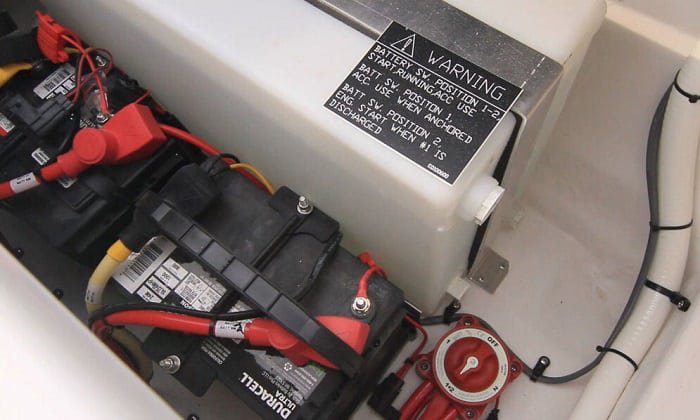
If you don’t have battery power, you’re going nowhere.
What can go wrong: There are plenty of ways to screw up this step. Failure to top off the water in non-sealed batteries can result in reduced starting power and premature aging. Not having the positive pole covered (as required by the Coast Guard) can result in sparking that can make a loud booming sound if gas fumes are concentrated nearby. Securing the cable with a wing nut will likely result in it coming loose due to vibration.
How to do it right: Make sure the battery is fully charged and filled, if applicable, secure it to the hull, spray or paint an anti-corrosive liquid on the poles, cover the positive pole and secure the cables using locking nuts.
2. Not Replacing a Bad Water-Pump Impeller
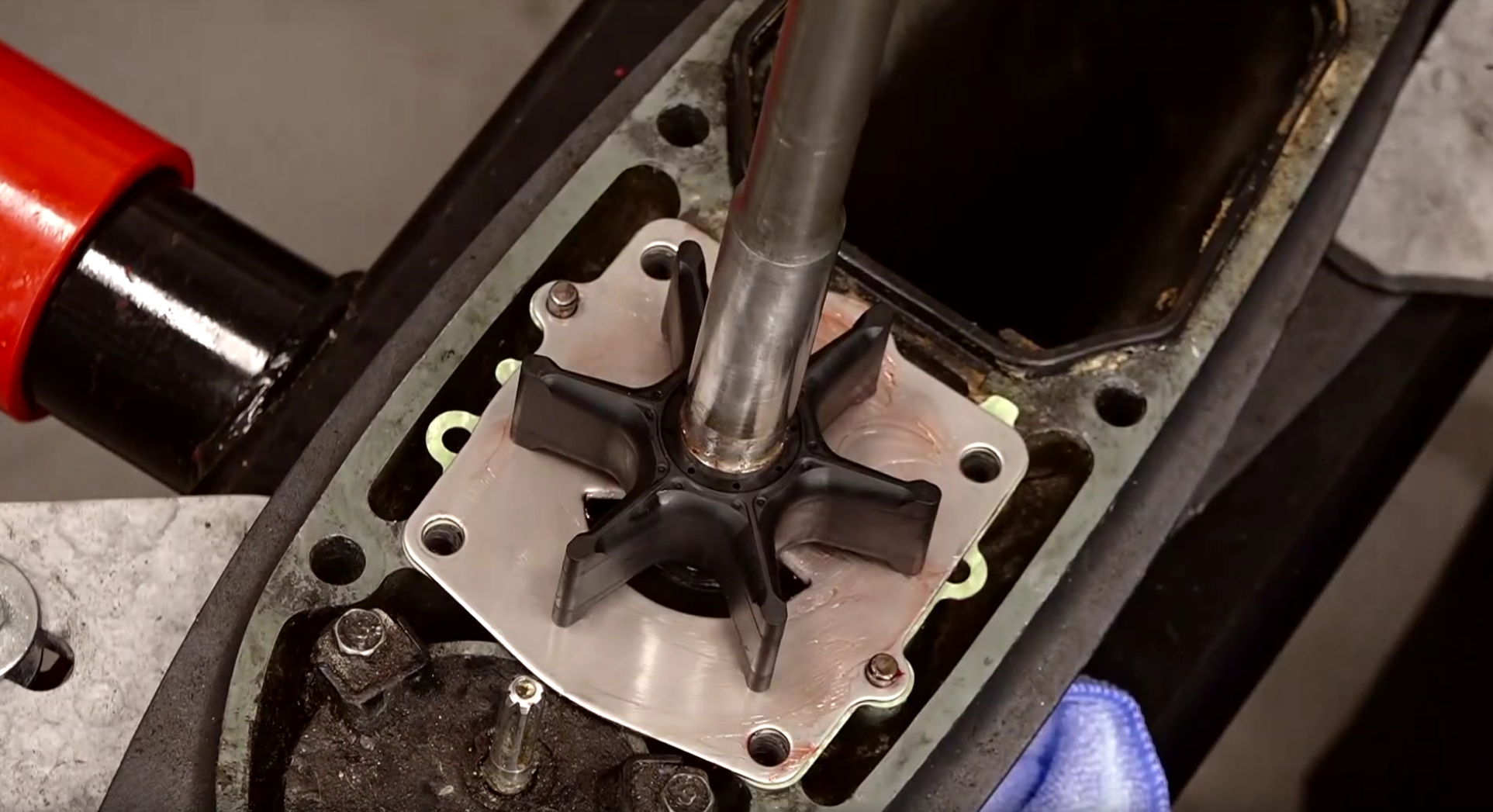
The impeller is the heart of your outboard cooling system. Neglect it, and it and your engine will fail at the most inopportune moment.
What can go wrong: Since the pump was working fine when you put it to sleep for the winter, it should be fine in the spring, right? Maybe, but after months of not moving or being lubricated, the rubber impeller tends to experience dry rot and become brittle. Should the vanes break off, they can travel to places where it’s nigh impossible to retrieve the pieces.
How to do it right: Inspecting and, if needed, replacing your water pump’s impeller at the beginning of the season is your best insurance for heading off engine overheating problems. Inspect the housing assembly and surrounding area for scratches and foreign matter. Replace the O-rings and lubricate everything with a light coat of grease.
3. Not Checking All Fluids Fluids
Fluids are the lifeblood of your engine. Neglect them, and you will add tears to the list of liquids found on your engine.
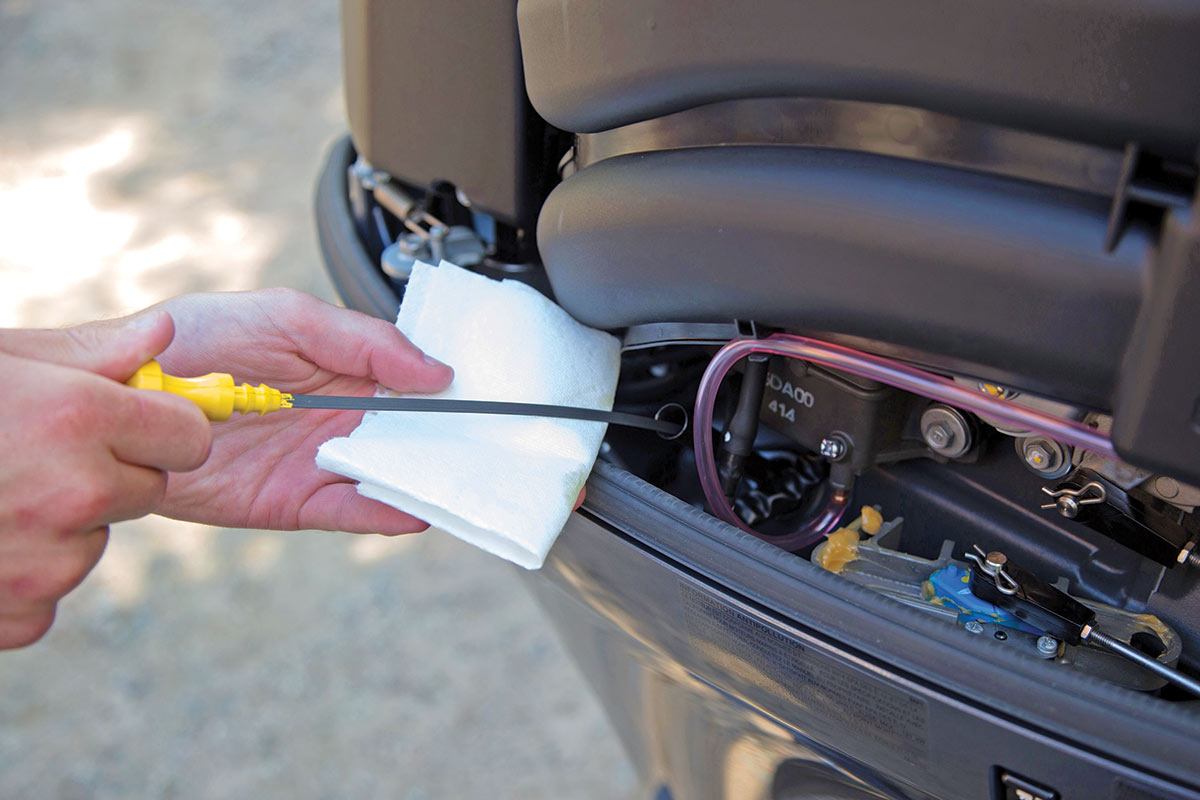
What can go wrong: There are fluids everywhere on your boat, and it’s easy to miss one. Low engine oil is a proven killer — boat motors tend to operate at higher rpm, so they work harder than your car’s. According to manufacturers, most engine failures are due to improper lubrication. Overfilling your oil is another problem that can lead to excessive oil pressure, which can rupture seals.
On another fluid front, assuming your gas is OK can be an expensive mistake.
How to do it right: All spring commissioning should incorporate a checklist, which is the best way to keep track of your fluid components. To make sure you get to all of the fluids, open your owner’s manual. Test your gas’ octane if you suspect a problem — smelling an odd odor or remembering that you forgot to add STA-BIL in the fall (test kits cost less than $25). If the octane level is low, you could have phase separation caused by ethanol-“enhanced” fuel, which is a proven engine killer. The only remedy: Pump it out.
4. Not Making Sure Everything’s Lubricated
Isaac Newton said, “An object at rest tends to stay at rest,” which proves he was a boat owner.
What can go wrong: As our buddy “Newt” implied, if something doesn’t move for a while it wants to stay that way. Shift, throttle and steering cables are prone to becoming sticky when not used over the winter and can freeze up as they get older. Not checking them out before you launch can be embarrassing at the ramp when your boat won’t shift or steer.
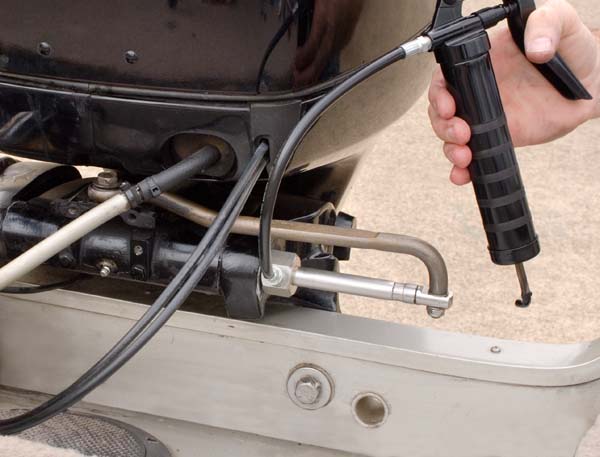
How to do it right: Lubricate every moving part and tighten every bolt on your motor, since they tend to loosen through vibration. Check all of the rubber parts, such as belts, hoses and bellows, for cracks.
5. Heading Off Without Proper Engine Prep
What can go wrong: When people change the plugs, they often get the cables mixed up, which will make your engine run rough. Try this pre-launch test at home: Bump the key to see if the engine is turning over before launching and heading offshore to restock the freezer.
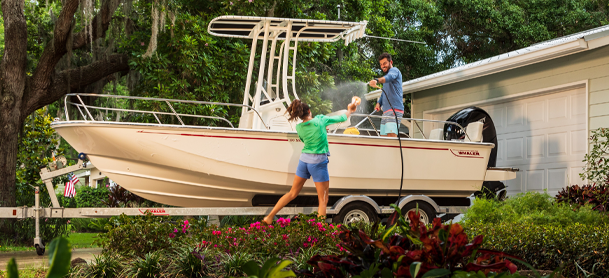
How to do it right: Before you fire your engine for the first time, change your plugs, unless they are platinum tipped, which can be used several seasons. Either change one at a time, or label the wire after pulling the plug to avoid mix-ups. Some people recommend cranking the engine without the plugs to blow out the piston oil you winterized with, but unless you really gunked it up, it should burn off quickly on its own.
Run the engine at home first while constantly monitoring it for overheating. A temperature gun can help detect temperature anomalies. On your first trip of the year, stay fairly close to the dock or the ramp, unless you are bound and determined to get your money’s worth from your Sea Tow subscription.
Maintain your boat each eason and you will have many years of great adventures!
Posted by John Cocktolstoy


